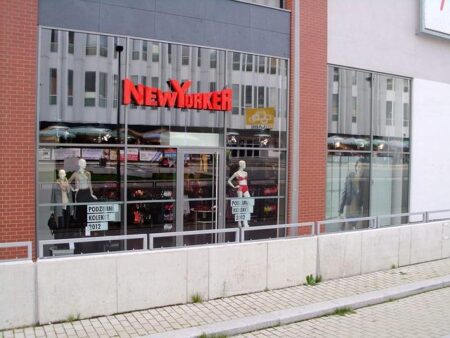Escalating Auto Insurance Costs: A Growing Challenge for New York City Businesses
Mounting Auto Insurance Expenses Strain NYC Small Enterprises
Small businesses across New York City are increasingly burdened by soaring auto insurance premiums, a cost that is rapidly becoming unsustainable. Companies that depend on vehicles for deliveries, client visits, or service calls are particularly vulnerable. Unlike large corporations with greater financial flexibility, these smaller operations face a complex and often opaque insurance market where rates surge due to frequent claims, evolving regulations, and rising repair expenses. This financial pressure is forcing many to cut back on staff, reduce operating hours, or even close their doors.
Several key factors contribute to this upward trend in insurance costs:
- Premium hikes: Insurance rates have increased by more than 15% annually over the past two years.
- Stringent regulatory environment: New York’s rigorous insurance mandates limit affordable coverage options.
- High urban risk: Dense traffic and elevated accident rates in NYC drive insurers to raise premiums.
- Market concentration: A handful of insurers dominate, reducing competition and bargaining power.
| Year | Average Premium Increase (%) | Small Business Closures (%) |
|---|---|---|
| 2022 | 12 | 8 |
| 2023 | 15 | 12 |
| 2024 (Projected) | 18 | 15 |
Transforming Urban Commerce: The Ripple Effects of Rising Insurance Premiums
In addition to grappling with exorbitant rents and evolving consumer trends, urban businesses in NYC now confront the escalating cost of auto insurance. For many small enterprises that rely on vehicle fleets for deliveries or service calls, these rising premiums are a significant financial strain. This pressure has led to operational shifts, including business closures and relocations to more affordable areas, which in turn alters the commercial fabric of neighborhoods by reducing diversity and foot traffic.
Key drivers behind these premium increases include:
- Higher claim rates: Congested city streets contribute to more frequent accidents.
- Escalating repair and medical costs: Inflation in these areas inflates claim payouts.
- Regulatory adjustments: New laws compel insurers to raise rates.
- Limited underwriting flexibility: Insurers face constraints in urban risk assessment.
| Business Sector | Avg. Annual Premium (2020) | Avg. Annual Premium (2024) | Percentage Increase |
|---|---|---|---|
| Delivery Services | $4,200 | $7,800 | 86% |
| Retail Outlets | $3,000 | $5,700 | 90% |
| Service Providers | $3,500 | $6,400 | 83% |
Entrepreneurial Challenges and Economic Consequences in NYC
The surge in auto insurance premiums is more than a financial statistic; it represents a formidable obstacle for entrepreneurs striving to launch or expand their ventures in New York City. Small business owners, especially those dependent on transportation, are squeezed by insurance costs that outpace revenue growth. This strain curtails hiring, stifles expansion, and prompts some to relocate to less costly markets.
Entrepreneurs face difficult choices such as:
- Absorbing increased insurance expenses at the cost of investments in marketing and infrastructure.
- Passing costs onto customers, risking loss of competitive edge.
- Relocating operations, disrupting local economies and community networks.
The broader economic impact is significant. Studies indicate that a 10% rise in auto insurance premiums correlates with a 3% drop in small business growth locally. This trend threatens New York City’s standing as a dynamic center for innovation and commerce.
| Economic Indicator | Before Premium Increase | After Premium Increase |
|---|---|---|
| New Business Registrations (Monthly) | 1,200 | 850 |
| Average Monthly Revenue | $45,000 | $37,000 |
| Employment Growth Rate | 4.5% | 1.7% |
Strategic Policy Interventions to Ease Insurance Costs and Foster Business Resilience
Addressing the escalating auto insurance premiums requires comprehensive policy reforms focused on transparency, competition, and legal efficiency. Mandating public disclosure of how insurance rates are set would empower business owners with clearer insights, fostering trust and enabling advocacy for fairer pricing. Encouraging new insurers to enter the market and promoting alternative insurance models-such as pay-per-mile or usage-based policies tailored to urban driving-can help align premiums more closely with actual risk, potentially lowering costs.
Reforming the claims and litigation landscape is equally vital. Simplifying dispute resolution and tightening regulations against frivolous lawsuits would reduce unnecessary expenses passed on to businesses. Recommended policy measures include:
- Advancing no-fault insurance reforms to minimize legal costs.
- Implementing robust fraud detection systems to protect honest policyholders.
- Offering tax incentives or rebates for businesses adopting driver safety technologies.
| Policy Initiative | Anticipated Outcome |
|---|---|
| Mandatory Rate Transparency | Greater Accountability |
| No-Fault Insurance Reform | Reduced Legal Expenses |
| Fraud Prevention Programs | Lower Premium Inflation |
| Safety Technology Incentives | Improved Driver Safety |
Conclusion: Navigating the Future of Business in NYC Amid Rising Auto Insurance Costs
As auto insurance premiums continue their upward trajectory in New York City, they pose a growing financial challenge for small businesses and individual drivers alike. This often-overlooked expense threatens not only the viability of many enterprises but also the economic vitality of the city’s neighborhoods. Without targeted reforms addressing the root causes of these rising costs, New York risks losing the very businesses that contribute to its dynamic commercial landscape. Policymakers must act decisively to ensure that the city remains a thriving environment for entrepreneurship and innovation.













